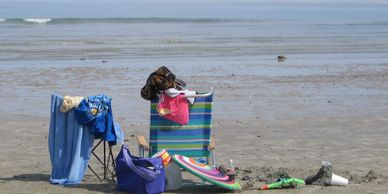

Explore the rocky shore
Explore the rocky shore
Explore the rocky shore

The hard surfaces of rocky shore basalt boulders and coquina reef rock provide a stable substrate for sea life attachments, hideaway niches, and shelter from the surging surf.
Explore the sandy shore
Explore the rocky shore
Explore the rocky shore

The sandy shore provides little surface shelter for seashore creatures who must follow the outgoing tide or burrow into the moist sand below to await the returning sea.
Explore the muddy shore
Explore the rocky shore
Tip of your Toes Adventures

The muddy shores of estuaries, harbors, coastal inlets and river mouths are mostly made of silts and clay where animals that live below the surface can thrive.
Tip of your Toes Adventures
Tip of your Toes Adventures

Use The Edge of the Sea of Cortez book to learn about where tidepool life can be found and enjoyed.
Rest & Relaxation

Combine a tidepool walk and marine discovery with pure and simple R&R.
Seaside Study

Join a marine science teacher and get the real scoop on tidepool creatures.
Tidepool Treasures at the edge of the sea of cortez

Giant Panamic Cockle
Giant Panamic Cockle
Giant Panamic Cockle
Large cockles have been found in ancient and historical middens on the Gulf coast.

Fitch's Octopus
Giant Panamic Cockle
Giant Panamic Cockle
This small octopus is hand-sized when an adult.

Scallop
Giant Panamic Cockle
Scallop
Atypical of bivalves, this scallop's two valves are not alike.
more tidepool treasures
Designer bird beaks
Carnivorous "flowers"
Carnivorous "flowers"

Shore bird beak shape and size influence feeding, habitat preference and prey selection, and reduces competition among species.
Carnivorous "flowers"
Carnivorous "flowers"
Carnivorous "flowers"

Sea anemones look like flowers but are carnivorous suspension feeders who trap live food as it drifts by their stinging tentacles.
Basement homes
Carnivorous "flowers"
Butterflies of the Sea

Animals of the muddy shore dig burrows shaped to accommodate their shelter needs and provide safety from predators waiting above.
Butterflies of the Sea
Butterflies of the Sea

Tiny fancy-dressed nudibranchs glide in the tidepools, displaying an astounding array of colors and patterns.
Chitons
Brittle Stars

Eight separate overlapping plates protect the chiton's body as it grazes on algae-covered tidepool rocks.
Brittle Stars
Brittle Stars

The aptly named brittle star may use a spontaneous defense mechanism called autonomy to cast off an arm that has been trapped.
Contact Us
Thank you in advance for your interest in the beautiful Sea of Cortez.
Please contact me by email, text or phone if you would like a copy of
The Edge of the Sea of Cortez, Tidewalkers Guide to the Upper Gulf of California
The price is $25.00 plus shipping.
Edge of the Sea
